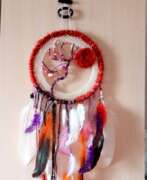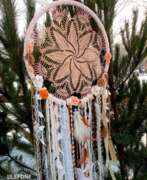Macrame

Macrame
Macrame is a historical textile art form originating from 13th-century Arabic weavers who used knotting techniques to finish the edges of hand-woven textiles. Known as "migramah" in Arabic, the craft spread to Europe through trade routes, gaining popularity in regions such as Italy and Spain before becoming widespread in the 17th century.
Characterized by the use of simple knots, macrame includes techniques such as the square knot and various forms of hitching. These basic knots allow crafters to create elaborate designs ranging from plant hangers and wall hangings to jewelry and clothing. During the Victorian era, macrame saw a significant revival, with intricate lace-like designs becoming fashionable home decor items.
In the modern era, macrame has experienced a resurgence, particularly among millennials who appreciate its meditative quality and creative potential. Today's macrame incorporates both traditional and innovative designs, often seen in contemporary interior decor and fashion accessories.
To stay updated on new macrame products and auction events, sign up for our newsletter. You'll receive exclusive alerts about the latest in macrame art and design.
| Country: | Asia, Europe, Saudi Arabia, Spain |
|---|---|
| Start of the period: | XIII century |



